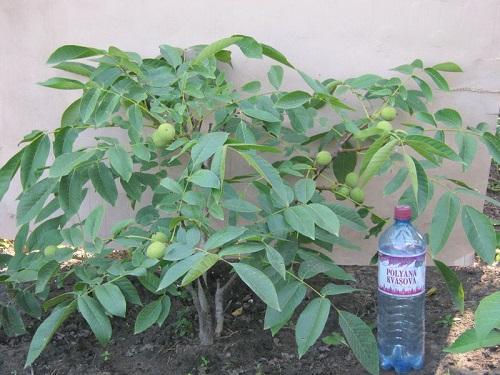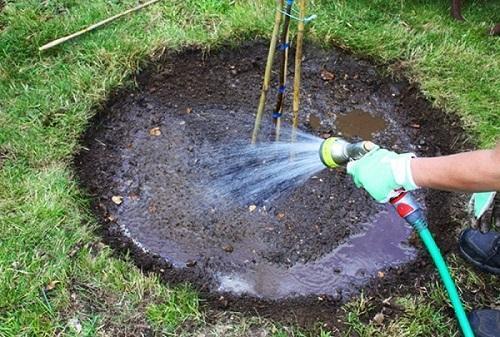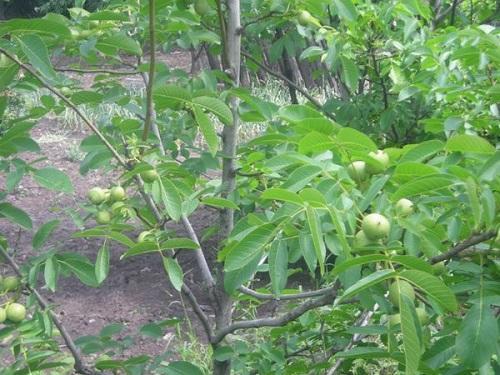We grow walnuts on the site: care features

Some gardeners, having planted a nut on the site, immediately forget about it, believing that the nut will grow without their participation, and after a dozen years they wonder why there is no harvest. Of course, the nut is one of the most unpretentious garden centenarians, but it also requires a certain amount of attention. Otherwise, over time, instead of a large tall tree with a sprawling crown, a lopsided screech with small fruits will grow.
Walnut care is simple and includes:
- regular watering;
- periodic feeding;
- pruning;
- treatment against pests and diseases.
Watering mode

The frequency of watering directly depends on the frequency of precipitation and the age of the tree. Young walnut seedlings, from spring to autumn, need very abundant watering 2 times a month. However, if the summer is rainy, additional moisture is not needed so that the roots do not rot. In the absence of autumn rains, a young hazel tree needs water-charging irrigation for a good winter.
Large nuts, the height of which exceeds 4 meters, practically do not need watering (except for a prolonged drought), since their powerful roots are able to take moisture from the depths of the earth.
As for loosening the near-stem circle after watering, it is often not necessary to do this, so as not to damage the roots. Enough two loosening per season and autumn digging. The nut generally does not like excessive interference, and to protect the soil from the formation of a dry crust, it is better to use mulch.
Features of nut fertilization

Nut dressing begins from the fourth year of life. This applies to those seedlings, when planting which substances necessary for the development of the tree were introduced into the planting pit. Their nuts usually last for the first three years.
From the fourth year after planting, spring should be applied nitrogen fertilizers (ammonium nitrate), and in the fall - mineral preparations, which include potassium and phosphorus (potassium salt, superphosphate).
Nut trimming

During the first five years of the nut's life, the crown of the tree is formed:
- choose and leave the strongest shoot in the tree nut, which will become the main one, and pinch the tops of the remaining branches;
- in the future, the lateral shoots must be cut off until 6 to 10 skeletal branches are formed on the tree (they are pinched).
When the contours of the crown are formed, the nut will cope on its own. All that remains is to carry out sanitary pruning, cutting out damaged and diseased shoots, as well as those branches that go inside the crown.
Formative pruning is best done in the spring and sanitary pruning in the fall.
Preventive treatments
Walnut, like other garden trees, is fond of pests and diseases, so it is better to take action and protect it from damage than to actively treat it later.
For prevention, the nut must be sprayed with a solution of copper sulfate twice a year: in early spring, when the buds have not yet blossomed, and in late autumn, after the leaves have fallen off.